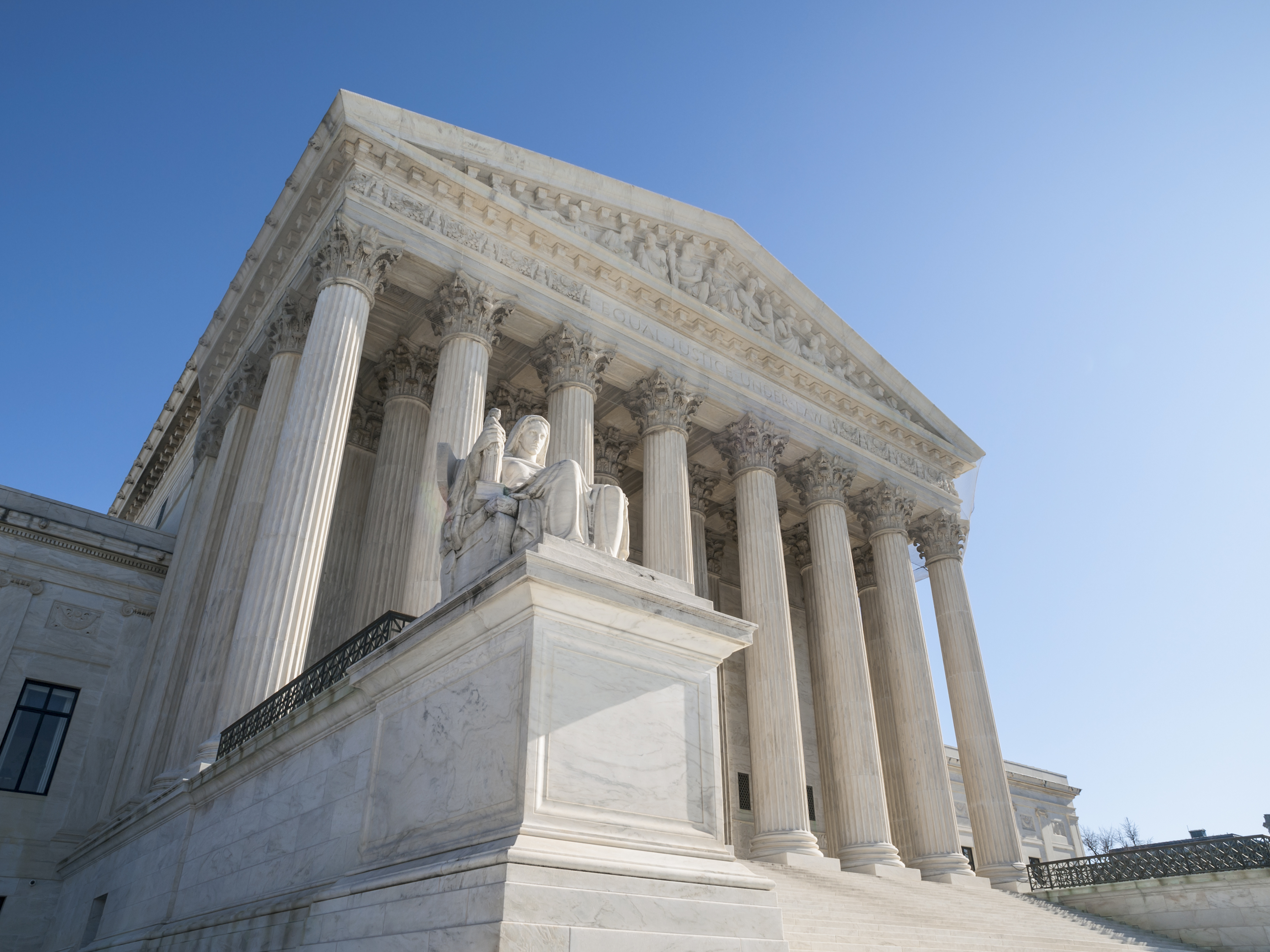
The justices ruled that authorities generally must obtain a warrant to gain access to cell tower records that can provide a virtual timeline and map of a person's whereabouts - information that is "detailed, encyclopedic, and effortlessly compiled," in the words of Chief Justice John Roberts Jr.
While he described the ruling as narrowly focused on the cell tower information at issue, the reasoning that he and the court's liberals adopted in the 5-to-4 decision lends itself to protection of other forms of records and data a person compiles in daily modern life.
"This is a groundbreaking victory for privacy rights in the digital age," said Carol Rose, executive director of the American Civil Liberties Union of Massachusetts, adding that it "provides a framework for safeguarding other sensitive digital information - from our emails and smart home appliances to technology that is yet to be invented."
Former prosecutors and the four dissenting justices said the ruling threatens to put off-limits to police and prosecutors a major tool used in developing investigations.
Justice Samuel Alito Jr., one of two former prosecutors on the court, said the ruling "guarantees a blizzard of litigation while threatening many legitimate and valuable investigative practices upon which law enforcement has rightfully come to rely."
Edward McAndrew, a Washington lawyer and former federal cybercrimes prosecutor, predicted a "monumental impact" from the ruling.
"Cell site information is often gathered earlier in an investigation," McAndrew said. "It's one of the building blocks to establish probable cause and support obtaining things like search warrants and, eventually, charges."
Roberts did not disagree but said constitutional protections against unlawful searches and seizures enshrined in the Fourth Amendment must be applied to evolving technology.
"Here the progress of science has afforded law enforcement a powerful new tool to carry out its important responsibilities," he wrote. "At the same time, this tool risks government encroachment of the sort the Framers, after consulting the lessons of history, drafted the Fourth Amendment to prevent."
An FBI spokesman said the bureau is "working with the Department of Justice to assess the impact of the ruling."
The justices ruled for Timothy Carpenter, who is serving a 116-year sentence for his role in armed robberies in 2010 and 2011 at RadioShack and T-Mobile stores in and around Detroit. He was accused of being the ringleader of a gang stealing smartphones.
One of the men arrested said Carpenter typically organized the robberies, supplied the guns and acted as a lookout. Authorities asked his cellphone carrier for 127 days of records that would show Carpenter's use of his phone.
Such records indicate where a cellphone establishes connections with a specific cell tower and give a fair representation of the vicinity of the user. In Carpenter's case, the mass of information showed his phone at 12,898 locations, including close to the sites of the robberies at the times they took place.
Carpenter's attorneys said that the prosecutors' actions violated their client's Fourth Amendment search-and-seizure claims. Authorities should have had to convince a judge that there was probable cause to get the records, they said.
The Justice Department, however, cited the Stored Communications Act, in which authorities had only to meet a lesser standard: that there were "reasonable grounds to believe" that the records sought "are relevant and material to an ongoing criminal investigation."
The majority's view that a warrant is needed to get the records from a third party - Carpenter's cellphone carrier - is a notable departure from some of the court's past decisions.
"Given the unique nature of cellphone location information, the fact that the government obtained the information from a third party does not overcome Carpenter's claim to Fourth Amendment protection," Roberts wrote.
Mapping a cellphone's location is like attaching a GPS device to a person, Roberts wrote, providing "an intimate window into a person's life, revealing not only his particular movements, but through them his 'familial, political, professional, religious, and sexual associations.' "
He was quoting in part a previous opinion of Justice Sonia Sotomayor, who helped form the majority along with fellow liberals Ruth Bader Ginsburg, Stephen Breyer and Elena Kagan.
Prosecutors contended that in obtaining Carpenter's cellphone data without a warrant, their actions fit squarely with the Supreme Court's prevailing precedents. In the 1979 decision in Smith v. Maryland, the court ruled that requesting records that showed the numbers called from a home phone did not constitute what would be considered a "search" under the Fourth Amendment.
Because the caller's information was voluntarily transmitted to a third party - the telephone company - the caller had no reasonable expectation that the numbers called would remain private.
But the court in recent years has shown more adaptation to new technology.
In 2014, it said a warrant was needed to search a person's cellphone.
"Modern cellphones are not just another technological convenience," Roberts wrote for the court at the time. "They could just as easily be called cameras, video players, Rolodexes, calendars, tape recorders, libraries, diaries, albums, televisions, maps or newspapers."
Two years earlier, the court ruled against law enforcement after authorities attached a GPS device to a suspect's car and tracked his movements for 28 days.
To limit Friday's ruling, Roberts said there could be some warrantless release of cell tower records in real-time situation such as bomb threats, active shootings and child abductions.
Additionally, the ruling doesn't "call into question conventional surveillance techniques and tools, such as security cameras," he wrote.
Not does it cover "other collection techniques involving foreign affairs or national security."
But the four dissenting justices - Anthony Kennedy, Clarence Thomas, Neil Gorsuch and Alito - said it did plenty.
Kennedy pointed out it was a serious departure from the court's previous holdings about records held by third parties. He pointed out the government may use a subpoena - rather than a harder-to-obtain warrant - to obtain bank records, telephone records and credit card statement as investigative tools.
"The troves of intimate information the government can and does obtain using financial records and telephone records dwarfs what can be gathered from cell-site records," Kennedy wrote.
So he said it makes no sense for the court to make an exception in this case, since "cell-site records are uniquely suited to help the government develop probable cause to apprehend some of the nation's most dangerous criminals: serial killers, rapists, arsonists, robbers, and so forth."
Alito said the majority's "desire to make a statement about privacy in the digital age" was misdirected.
"Some of the greatest threats to individual privacy may come from powerful private companies that collect and sometimes misuse vast quantities of data about the lives of ordinary Americans," he wrote. "If today's decision encourages the public to think that this court can protect them from this looming threat to their privacy, the decision will mislead as well as disrupt."
The case is Carpenter v. U.S.


 Contact The Editor
Contact The Editor
 Articles By This Author
Articles By This Author